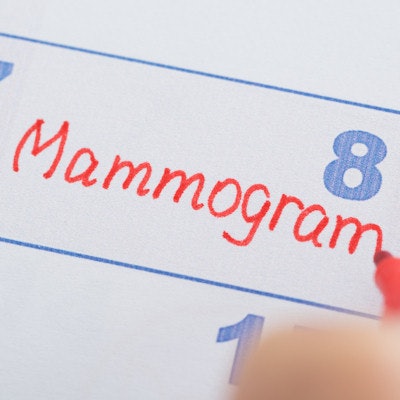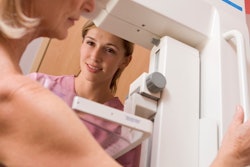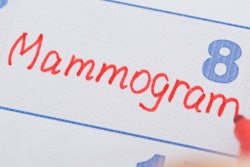
In the quest to provide the most effective breast cancer screening, radiologists are constantly trying to improve their performance metrics -- one of which is recall rate. And lower is always better, right? Perhaps not, according to a new study published in the January issue of the American Journal of Roentgenology.
Most breast centers should target a recall rate range of 5% to 12%, according to previous research from the Breast Cancer Surveillance Consortium, while also taking the sensitivity of mammography screening into consideration. However, a team from Northwestern Memorial Hospital in Chicago thinks there's a better range (AJR, January 2017, Vol. 208:1, pp. 208-213).
"We've found that sometimes higher recall rates translate into finding more cancers -- and significant ones," lead author Dr. Paula Grabler told AuntMinnie.com. "We also found that rates of less than 10% may be too low."
The sweet spot
To identify an optimal screening mammography recall rate range, Grabler and colleagues used Rush University medical outcome data from September 2007 to August 2012. They calculated cancer detection rates from 984 screen-detected cancers found in 188,959 digital screening mammograms. They also calculated the percentages of minimally invasive and early-stage cancers and assessed cancer detection rate variations by the following recall categories: less than 10%, 10% to less than 12%, 12% to less than 14%, and 14% or higher.
Cancer detection rates were higher on a statistically significant basis when recall rates were 12% or higher -- and cancers being detected were invasive or minimally invasive. Catching minimally invasive cancers (those less than 1 cm and with no lymph node involvement) not only gives women a better prognosis, but also may help them avoid chemotherapy as part of treatment, according to the team.
"Radiologists in our practice with a recall rate below 10% found significantly fewer breast cancers of all types when compared to those in our practice with recall rates above 12%," the authors wrote. "In contrast, those breast imagers in our practice operating at recall rates of 12% or higher found significantly more cancers of all types."
| Cancer detection by recall rate | ||||
| Metric | Recall rate | |||
| < 10% | 10% to < 12% | 12% to < 14% | ≥ 14% | |
| Overall No. of cancers per 1,000 mammograms | 3.3 | 4.4 | 5.8 | 6.8 |
| Invasive cancer detection rate, per 1,000 mammograms | 1.9 | 2.9 | 3.3 | 4.2 |
| Minimally invasive cancer detection rate, per 1,000 mammograms | 0.7 | 1.31 | 1.6 | 1.8 |
| Percentage of minimally invasive cancer detected | 63.4% | 63.2% | 70.7% | 66% |
| Percentage of early-stage cancer detected | 78.7% | 80.3% | 83.3% | 83.2% |
Critics have suggested that higher recall and cancer detection rates may be due to the detection of insignificant cancers: that is, ductal carcinoma in situ (DCIS) that may never progress to invasive cancer, the researchers noted. But their study found no differences in the percentage of DCIS relative to the total number of cancers detected for each recall subgroup, they wrote.
Go high?
So what's the "sweet spot" for a mammography recall rate range? Go high -- or at least higher, the team concluded.
"On the basis of our findings, a recall rate range of 12% to less than 14% appears optimal," Grabler and colleagues wrote. "A recall rate of less than 10% seems to be too low."



















